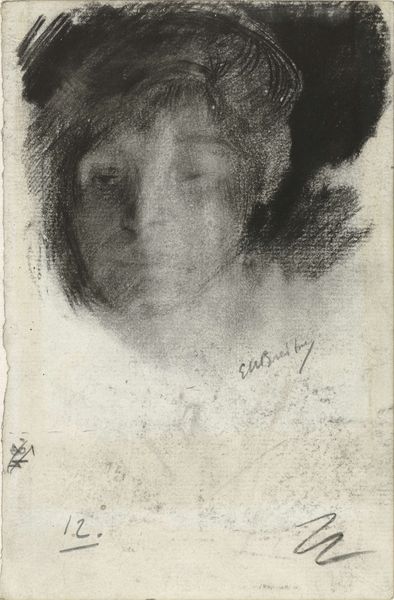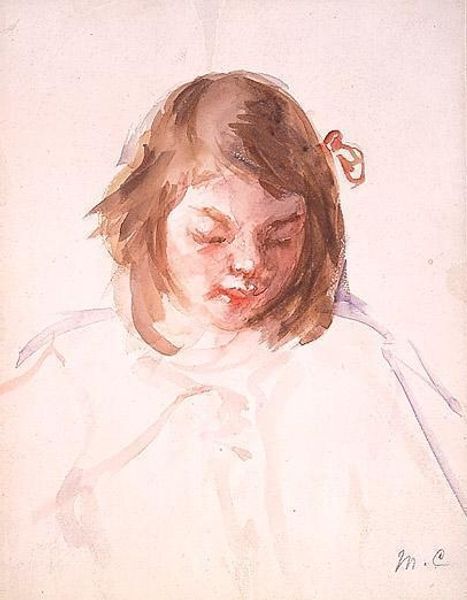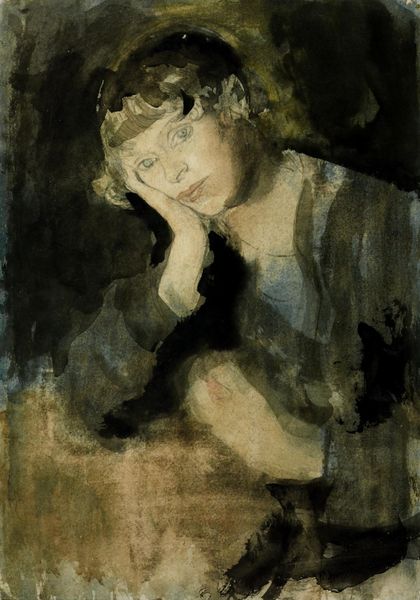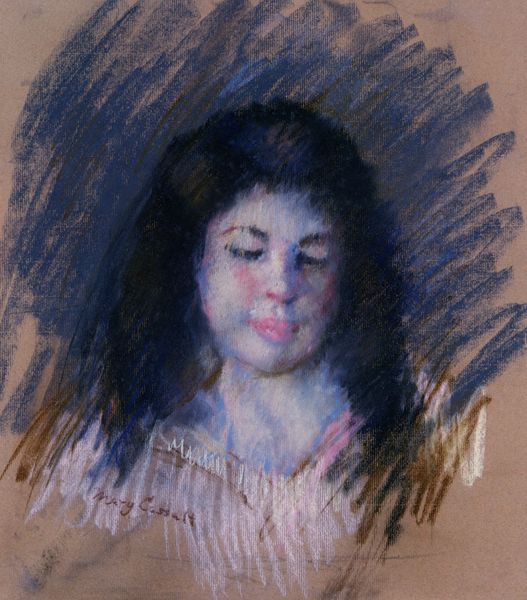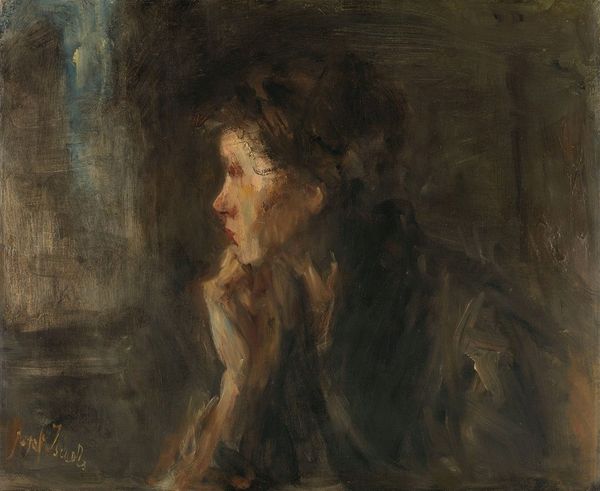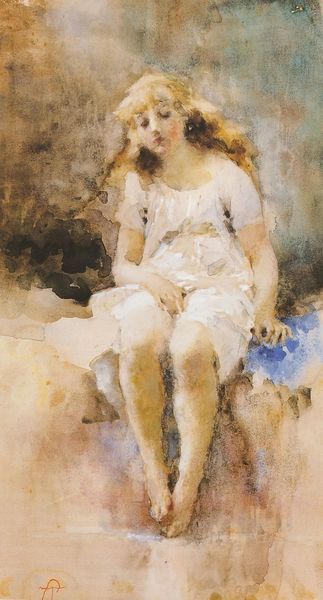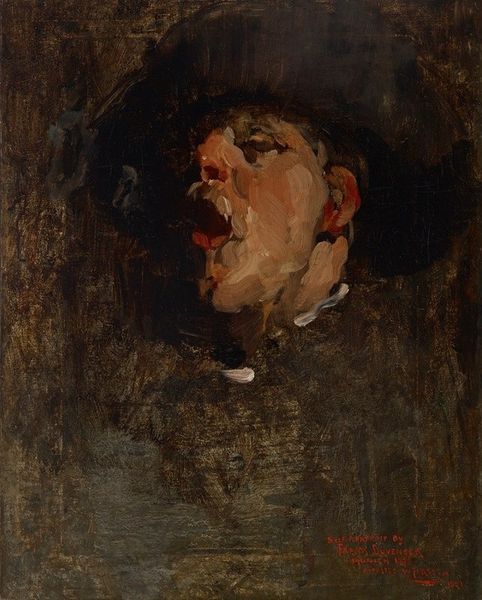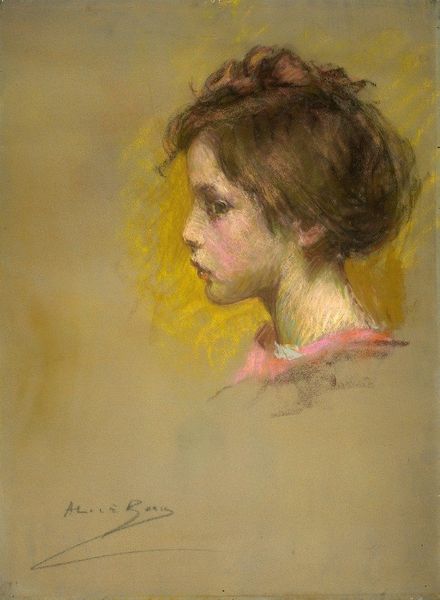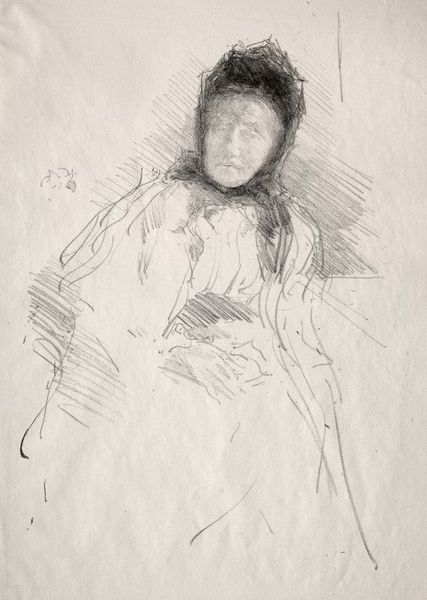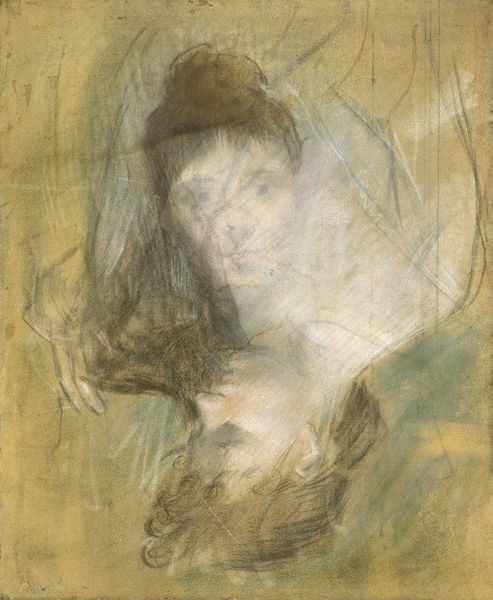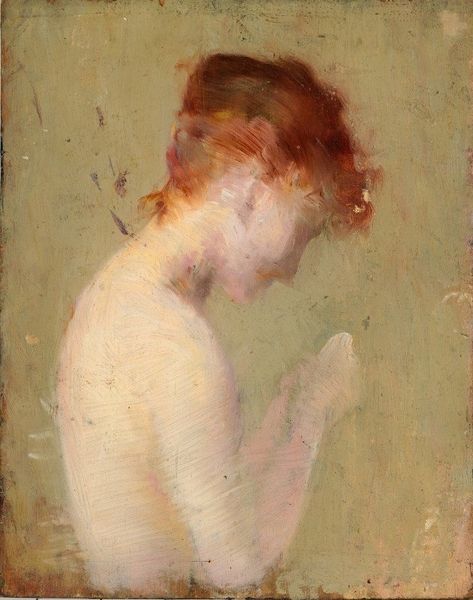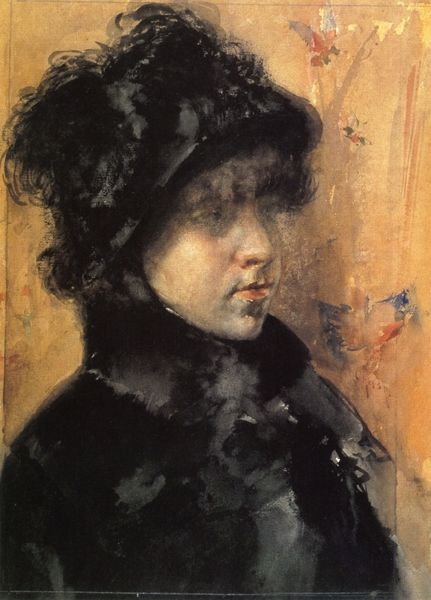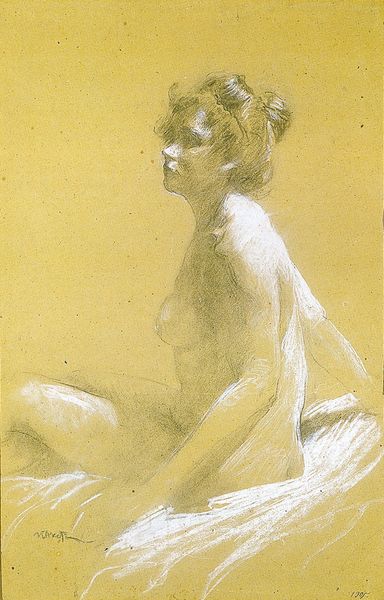
Copyright: Public domain
Curator: A Young Girl Laughing by Antonio Mancini, dating from 1900. The artwork employs oil paint, pastel, and drawing as its combined medium to deliver the intimate portrait. Editor: There’s an almost ghostly presence about this girl, despite the clear focus on joy. It feels melancholic, as if the laughter is fleeting, or perhaps even forced. I see the face, and I read joy, but the wispy composition style brings in something else...something less literal. Curator: Mancini was indeed interested in the portrayal of ephemeral states. Consider how the texture alone constructs her visible emotion. The juxtaposition of sharp charcoal lines delineating the face against the softness of the pastel around her creates a deliberate visual tension. Editor: The girl herself seems suspended—caught between darkness and the faint rosy luminescence of the dress. Her face occupies most of the frame. Tell me more about the culture into which that particular mode of Romantic figuration was released... Curator: During this time, portraiture began to move beyond mere likeness to exploring psychological depth. Mancini situated himself as the inheritor of Romantic sensibilities. This choice positioned him critically as being able to offer viewers a glimpse into the inner life of his subjects through external portrayals. Editor: You mentioned portraiture moved beyond mere likeness. In this period, certainly, the bourgeoisie was consolidating social power. The fact that Mancini paints a smiling young girl situates this work not so much as a portrait but as a declaration. He is delivering to the ascendant class something worthy of praise, but ultimately without disrupting the political order. The art functions as decoration of the new establishment's power. Curator: Your interpretation hinges on societal elements, I will give you that. The brushwork carries the expressive charge. Look how each stroke actively builds the facial structure. Notice the deliberate dissolving edges that render it intangible. It is both present and fading into oblivion simultaneously, becoming a statement regarding the unstable nature of happiness, but not the Bourgeois class. Editor: Even if the execution is perfect, that Mancini focused on rendering the smile rather than engaging in the construction of greater intellectual complexity can speak of this period as one ultimately concerned with maintaining the dominant social discourse in favor of aesthetics. That in itself does make the political. Curator: It appears our diverging perspectives allow for appreciating Mancini's achievement more broadly, I believe. Editor: Agreed. A rewarding encounter indeed.
Comments
No comments
Be the first to comment and join the conversation on the ultimate creative platform.
